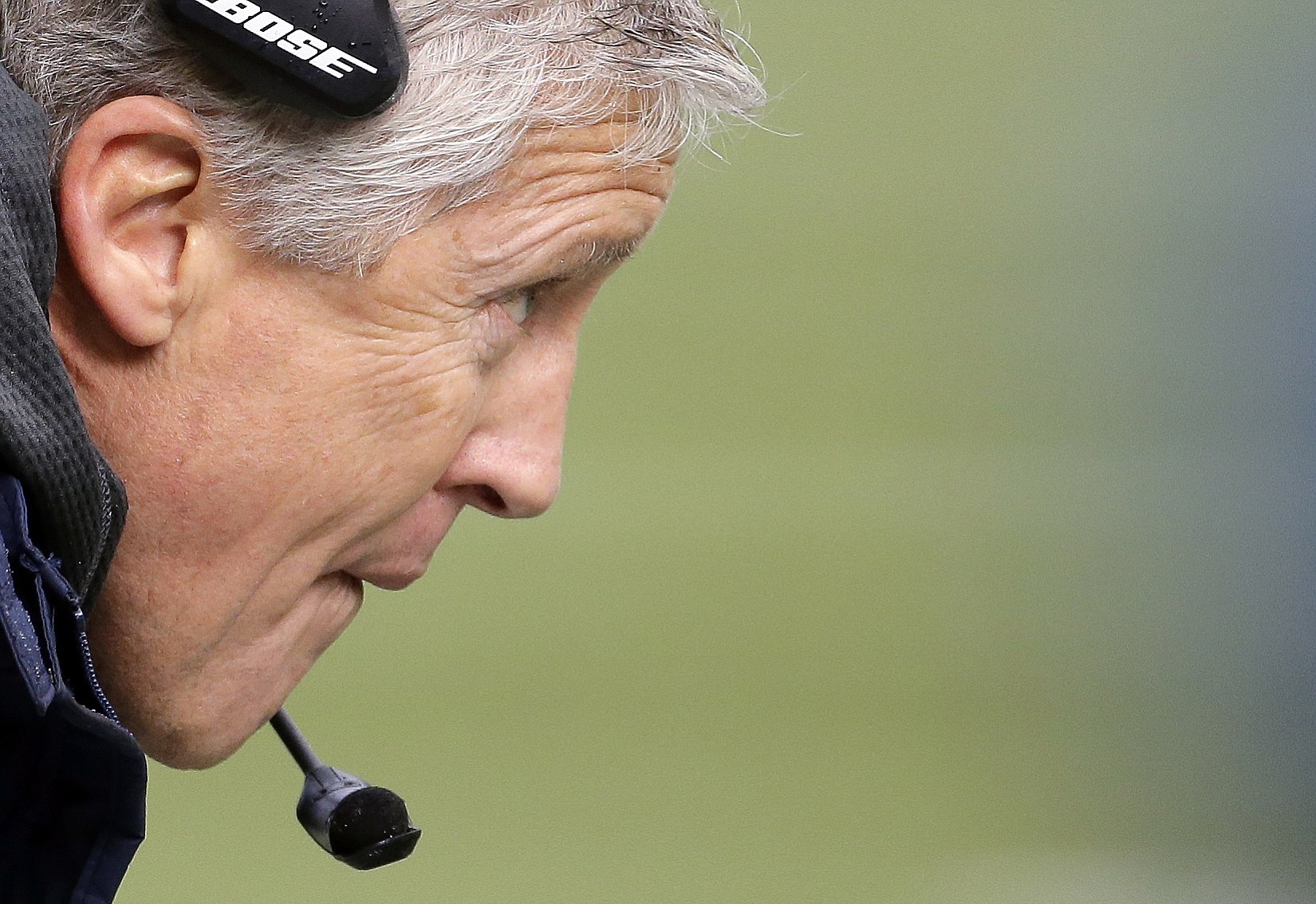PHOENIX — After he was fired by the New England Patriots in 1999, Pete Carroll went back to school.
Now even the most decorated coaches in the National Football League are trying to copy his homework.
The Seattle Seahawks coach believes he never truly hit his stride until he took the reins at the University of Southern California in 2001. There, he was given the freedom to run a program on his own terms.
Taking that same approach to Seattle, Carroll is now one Super Bowl win away from becoming the first coach to win multiple college and professional football championships.
His adversary on Sunday, New England coach Bill Belichick, doesn’t need to follow anyone’s mold. He’ll be in his sixth Super Bowl and could join Pittsburgh’s Chuck Noll as the only coaches to win four.
On the surface, there appears little in common between the coaches.
Belichick is a detail-oriented taskmaster who keeps his remarks short, whether inside the locker room or out.
Carroll feeds on emotion, whether in his verbose speeches or his knack for tapping into a player’s passion to bring out their best.
Yet the hard-to-impress Belichick, who replaced Carroll at New England, raves about the way Carroll has helped craft the Seahawks organization.
“I think that Pete’s one of the great coaches in my time.” Belichick said. “And what he’s done at USC and now in his five years with Seattle is beyond impressive. I tried to study him closely and learn from many of the things that he and his organization have done. I’ve watched them build that organization very carefully.”
Breaking the mold
A popular topic in the week leading up to the Super Bowl is how Carroll is looking for revenge against New England, where he went 27-21 over three years as head coach.
Carroll doesn’t look at it that way.
In his mind, that would be like regretting a flunked high school test after he’s already earned his doctorate. He hadn’t yet learned his craft during the years when he worked for Patriots owner Bob Kraft.
“It’s an entirely different formula,” Carroll said when asked to compare his time in New England with Seattle. “Really, it came out of the years at (USC). … I had the opportunity there to make every decision from recruiting to academics to everything.”
Total control.
It was a rare thing for an NFL coach to be given during Carroll’s first NFL stint. Never mind that Carroll’s ideas for how to build a football program were a little unconventional.
“The way we do things isn’t the way a lot of other people do things,” Carroll said. “There’s a business that goes along with it, but the football, I think, has to be run by the football people. We needed our own language and our own control and our own decision-making process.”
And in general manager John Schneider, Carroll was paired with a “football person” who shared his unconventional outlook.
In their first years together, they made more than 800 player transactions to ultimately build last season’s Super Bowl champion.
They took risks on unheralded players low in the draft. Richard Sherman, Kam Chancellor, Doug Baldwin and K.J. Wright were all acquired in the fourth round or later.
In 2012, Carroll had the guts to give the starting quarterback job to a 5-foot-10 rookie taken in the third round. Never mind that Seattle had just signed Matt Flynn to a three-year, $26 million contract.
Playing to strengths
But building a successful football organization isn’t just about mining talent from hidden veins.
It’s about tapping into what each player does uniquely well, without trying to mold them into something they’re not.
According to center Max Unger, that’s the magic of Carroll’s method.
“It’s just from the structure of focusing on what players do really well is what I get from his message,” Unger said. “Do what you do well and do it as hard as you can.”
At USC, Carroll learned how to build raw athletes into football players. Just because he’s dealing with professionals doesn’t mean that his approach has changed.
In 2012, Seattle was criticized for drafting Bruce Irvin in the first round and Bobby Wagner in the second round. Both were deemed too raw to be selected so high. But in them, Carroll and Schneider saw potential that they couldn’t pass up.
Now, Irvin is one of Seattle’s most dynamic and versatile playmakers on defense. Wagner is considered one of the NFL’s best young linebackers.
Sometimes, Carroll said, a player just needs a little confidence to get the ball rolling.
“We put them in the position to do the things that they’re really good at, and then we try to grow their roles from that,” Carroll said. “They can have success early and they can start to develop a confidence and some success that they can build on.”
Full circle
There’s a certain irony in Carroll and Belichick facing off. When Kraft hired Carroll in 1997, he had only been an NFL owner for three years. Carroll shared his nascent theories about how to run a football organization with Kraft.
“Knowing that he was a new owner, he was in a new business and really liking him, and we communicated really well,” Carroll said. “We talked about stuff and whether he applied it or not, I don’t know.”
When he was hired 15 years ago, Belichick was given much of the same wide-ranging control that Carroll now has in Seattle.
On the surface, Carroll and Belichick couldn’t appear more different. But in their philosophies and their record of success, they are actually quite similar.




